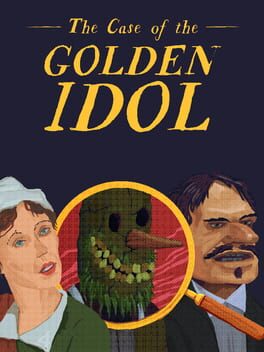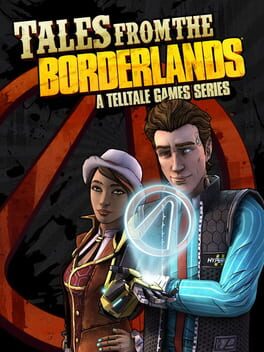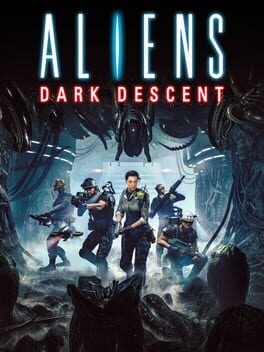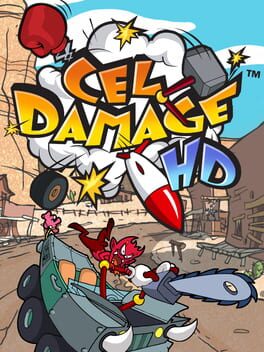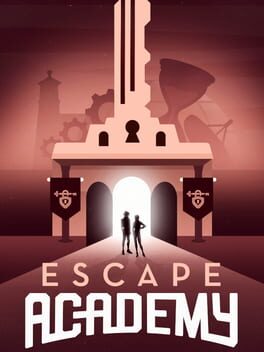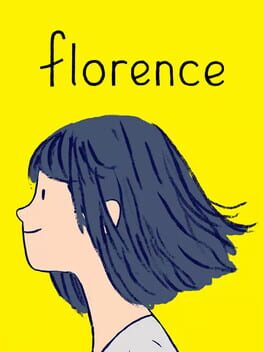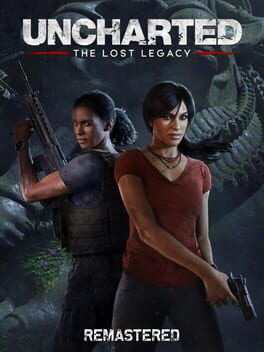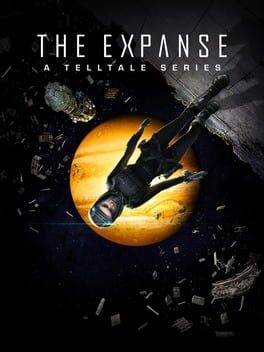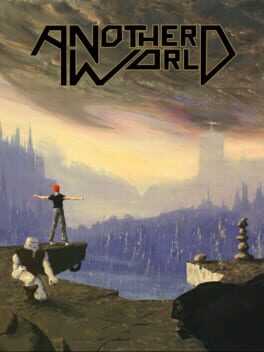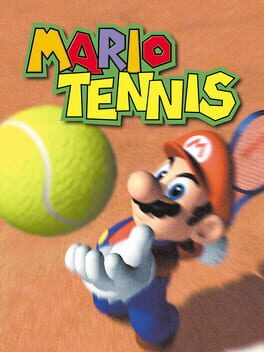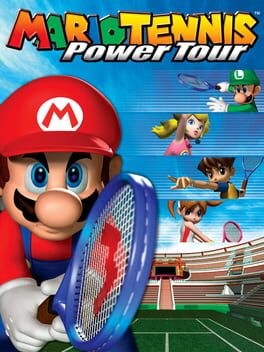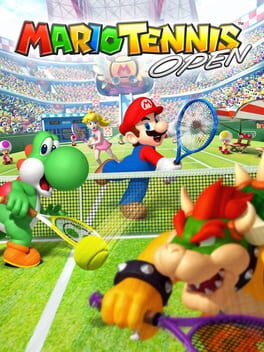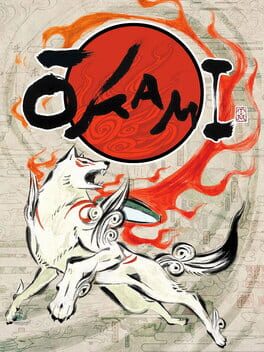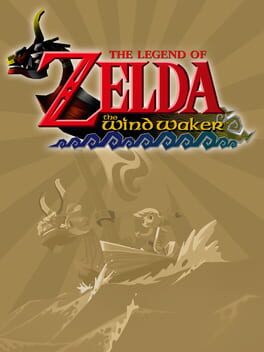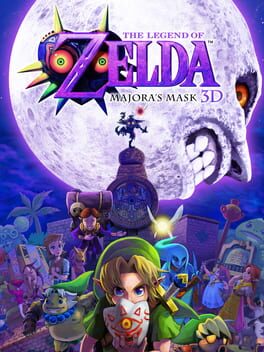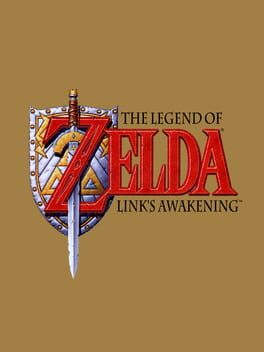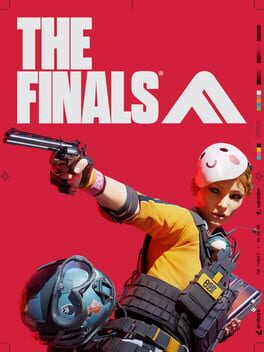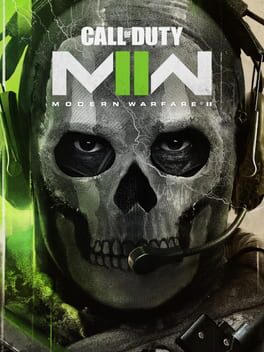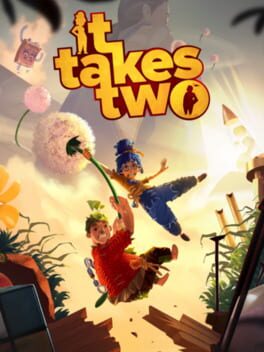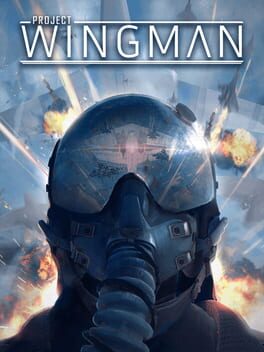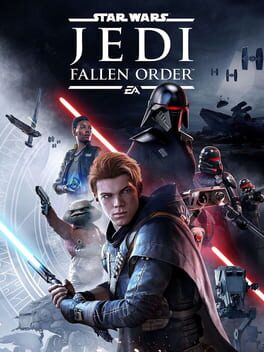Clearflora
96 reviews liked by Clearflora
Aliens: Dark Descent
2023
- 26 hours played
- Normal Difficulty
Aliens Dark Descent has to be one of the most brutal and unforgiving games I have ever played. Every aspect of the game is absolutely trying its hardest to beat you down. It’s an isometric, strategy game. You have a squad of 4 marines (5 later on) with which you embark on missions. You aim a cursor and press square to tell the marines where to go. You can have them sprint, take cover and perform a variety of special skill/class based actions. The missions are long and most of the time very gruelling.
There’s permadeath. So say bye bye to your marines forever if they get killed or kidnapped by Xenomorph’s. Each marine has a stress meter. If this gets too high they develop trauma. Trauma granting the marine negative traits such as taking stress damage when Aliens are around. Or a marine being an hypochondriac who takes stress damage when there’s no health kits in your inventory. There’s numerous Traumas to deal with and none of them are fun. That’s on top of each marine developing a negative trait of their own outside of and on top of Trauma. For example one of my marines was a bully, any marine on a lower level than the bully would take stress damage due to his presence. I also had a marine who would fire one extra ammo per burst of his rifle and that extra burst would always miss, costing me resources. Marines get injured. End up in Coma’s or lose limbs. Need to be carried to escape or saved from becoming an incubator via facehugger. And that’s just the stress from the marines aspect of the game. The levels don’t help.
That’s because every level has something different to offer. There’s 12 levels in total. You begin by exploring and uncovering the fog of war on the map. Your motion tracker beeps and alerts you to threats. You inch down hallways and check out abandoned facilities. It’s extremely tense and immersive. Missions have unique boss battles. Infinite horde sections that only end when an objective is complete. Horde mode style map defense for an allotted time. Stealth sections that work surprisingly well in this type of game. And mad dash sprints to the exit away from explosions or rampaging Xeno’s. Every mission has a meter at the top of the screen that fills up after combat. This will eventually level up from easy to medium where resistance gets a little tougher. To hard where it’s required for you to book it back to the escape vehicle and get out of there to redeploy another day. Missions take their toll on supplies and marines so you are allowed to make progress and then return to the ship. You can return to the mission and carry on where you left off after a day has passed. And here we get to even more stress management.
The Otago. Your base of operations. It’s here you spend time before and after missions. You can heal marines in the med bay. Upgrade weapons. Level up marines. Marines take actual in game days to heal injuries and you have a very limited amount of doctors per day to reduce the days needed to heal a marine. You can skip a day and return to a mission. But and it’s a big BUT. When you skip a day, there’s a little meter at the bottom of the screen that increases by 1 notch per day. After enough days have passed, the overall infestation of the planet will increase therefore making future mission deployments harder. Also after mission 5 this game introduces a death clock. 25 days to utter annihilation and game over. An actual save file failure. Many, many hours of game wasted if you happen to fall prey to this. Luckily I managed to beat the game with 10 days left but that was because I really knuckled down on missions 7, 8 and 9 and beat them in 1 deployment each.
So the game hates you and your marines. It wants you dead and puts you on the clock. Things always feel like they’re falling apart and I bloody loved this game. The story is very weak and plays with alien lore. Some may hate the unique beasts this game throws your way but I enjoyed them. The cutscenes are awful and facial animations are a few generations behind but overall in game graphics are quite nice. The ending I found very lacking. And it’s not an inviting game difficulty wise, even on normal. You can turn the death clock off but doing so forgoes trophies for completing the game. I didn’t want that.
There’s a lot of bugs as well and I don’t mean Xenomorphs. Character abilities missing off the skill screen menu which prevented me using them during the mission. Enemies bugging out in T pose. Button prompts not working no matter how much I spammed them, forcing a restart of the game. And don’t get me started on the god awful save system. There’s no manual save. You’re at the mercy of the auto save. You can save by welding a door shut and resting in a room (this also relieves stress) but this isn’t always possible. Dying sometimes meaning you have to repeat vast chunks of already completed sections. But despite this, Aliens Dark Descent was a great 26 hours spent gaming.
- Normal Difficulty
Aliens Dark Descent has to be one of the most brutal and unforgiving games I have ever played. Every aspect of the game is absolutely trying its hardest to beat you down. It’s an isometric, strategy game. You have a squad of 4 marines (5 later on) with which you embark on missions. You aim a cursor and press square to tell the marines where to go. You can have them sprint, take cover and perform a variety of special skill/class based actions. The missions are long and most of the time very gruelling.
There’s permadeath. So say bye bye to your marines forever if they get killed or kidnapped by Xenomorph’s. Each marine has a stress meter. If this gets too high they develop trauma. Trauma granting the marine negative traits such as taking stress damage when Aliens are around. Or a marine being an hypochondriac who takes stress damage when there’s no health kits in your inventory. There’s numerous Traumas to deal with and none of them are fun. That’s on top of each marine developing a negative trait of their own outside of and on top of Trauma. For example one of my marines was a bully, any marine on a lower level than the bully would take stress damage due to his presence. I also had a marine who would fire one extra ammo per burst of his rifle and that extra burst would always miss, costing me resources. Marines get injured. End up in Coma’s or lose limbs. Need to be carried to escape or saved from becoming an incubator via facehugger. And that’s just the stress from the marines aspect of the game. The levels don’t help.
That’s because every level has something different to offer. There’s 12 levels in total. You begin by exploring and uncovering the fog of war on the map. Your motion tracker beeps and alerts you to threats. You inch down hallways and check out abandoned facilities. It’s extremely tense and immersive. Missions have unique boss battles. Infinite horde sections that only end when an objective is complete. Horde mode style map defense for an allotted time. Stealth sections that work surprisingly well in this type of game. And mad dash sprints to the exit away from explosions or rampaging Xeno’s. Every mission has a meter at the top of the screen that fills up after combat. This will eventually level up from easy to medium where resistance gets a little tougher. To hard where it’s required for you to book it back to the escape vehicle and get out of there to redeploy another day. Missions take their toll on supplies and marines so you are allowed to make progress and then return to the ship. You can return to the mission and carry on where you left off after a day has passed. And here we get to even more stress management.
The Otago. Your base of operations. It’s here you spend time before and after missions. You can heal marines in the med bay. Upgrade weapons. Level up marines. Marines take actual in game days to heal injuries and you have a very limited amount of doctors per day to reduce the days needed to heal a marine. You can skip a day and return to a mission. But and it’s a big BUT. When you skip a day, there’s a little meter at the bottom of the screen that increases by 1 notch per day. After enough days have passed, the overall infestation of the planet will increase therefore making future mission deployments harder. Also after mission 5 this game introduces a death clock. 25 days to utter annihilation and game over. An actual save file failure. Many, many hours of game wasted if you happen to fall prey to this. Luckily I managed to beat the game with 10 days left but that was because I really knuckled down on missions 7, 8 and 9 and beat them in 1 deployment each.
So the game hates you and your marines. It wants you dead and puts you on the clock. Things always feel like they’re falling apart and I bloody loved this game. The story is very weak and plays with alien lore. Some may hate the unique beasts this game throws your way but I enjoyed them. The cutscenes are awful and facial animations are a few generations behind but overall in game graphics are quite nice. The ending I found very lacking. And it’s not an inviting game difficulty wise, even on normal. You can turn the death clock off but doing so forgoes trophies for completing the game. I didn’t want that.
There’s a lot of bugs as well and I don’t mean Xenomorphs. Character abilities missing off the skill screen menu which prevented me using them during the mission. Enemies bugging out in T pose. Button prompts not working no matter how much I spammed them, forcing a restart of the game. And don’t get me started on the god awful save system. There’s no manual save. You’re at the mercy of the auto save. You can save by welding a door shut and resting in a room (this also relieves stress) but this isn’t always possible. Dying sometimes meaning you have to repeat vast chunks of already completed sections. But despite this, Aliens Dark Descent was a great 26 hours spent gaming.
Cel Damage HD
2014
Escape Academy
2022
Frustratingly good.
For every great idea this game has, it has another terrible one to bring it back down. A troubled development process and shipping unfinished seem to be the story all the games in this series share, but you can truly feel the passion the developers had for this game and Ivalice in general.
As a disclaimer, I played this game with the "Final Fantasy XII TZA: Classic Mode" mod, which restores practically everything from the original PS2 release while keeping all of the quality of life from The Zodiac Age, which I highly recommend playing personally.
Before commenting anything about the game itself, Square Enix did an excellent job remastering this game; it's one of the best-looking PS2-era games already, and it looks even better in The Zodiac Age. The fast forward functions are a godsend, as are the improved loading times. These combined can save about 20 hours that you spend walking or loading on the PS2 version. Combined with the existence of the Classic Mode mod, this is the definitive way to play the game on PC, regardless of whether you prefer the original balancing or job system.
This game has some of the best English localization of any game I've played and is combined with fantastic voice acting. Unfortunately, the audio is quite low quality, and it isn't improved in the remaster, but that didn't stop me from enjoying the great dialogue. Gone are the typical tropey anime writing you tend to see in a lot of other JRPGs to be replaced by classical Victorian-era vernacular, and it's spectacular.
However, even with the great writing, the plot points were stretched too thin in the middle of the game to make the game feel grander than it is. To pinpoint an exact part of the game where the story falls apart, it would be after the final Mt. Bur-Omisace visit halfway through the game, where you're asked to walk across the map with very little plot or cutscenes outside of some minor character exposition. The game never comes back from the lowered focus on the story until the very end, after the point of no return, where I felt the game forgot its own tone it set. The characters ended up being too one-note and underdeveloped, with most of them existing for the sake of driving someone else's character arc, though I still enjoyed their dialogue between each other, and liked Ashe, Balthier, and Basch, who feel like the closest to main protagonists.
Nevertheless, I found the intro and credits sequence to be excellent, while the middle of the game had a lot of low points. The music being great is just a Final Fantasy standard, and the ambient tracks were the star of the show for this game. However, I felt like the lack of combat music for normal fights took a lot of intensity out of the game, though I did get why they did it to make the game feel more seamless.
The worst part of the game is how slow it is to play. This game has an excessive amount of walking in it, to the point of having a step counter in the menu. While it isn't a true open world, it's made up of many interconnected zones that have a loading screen in between, which is perfectly fine except for the fact that you walk incredibly slowly and there's no run button outside of Chocobo's in a select few locations. It would also be more bearable if most of the environments weren't just long hallways, deserts, or flatlands. The remedy for this run button is the 2x/4x speed, but I find that more of a band-aid fix than a substitute because it just feels like your time is being wasted exploring the same environments at a snail's pace. The combat also feels incredibly slow. In the beginning, when you do not have many skills, there isn't much you can do other than watch the combat animations and fill the ATB bar, which takes forever even with max battle speed in the settings. 2x with max battle speed on Active Mode is what I recommend for most of the battles in the game outside of boss fights since you do not need to perform many actions if you have your gambits set up properly.
As for the combat itself, it's very unique, but I can see why no game really replicates it. The most apt description I can give of it is that it is very similar to a tab-target game with a long global cooldown like FFXI or FFXIV. Where it differs is in your control of your party members and how you can automate nearly everything in the game with the gambit system, which makes the game feel more akin to a tower defense game where you set your parameters beforehand and then watch your strategy play out. I found the combat most enjoyable when fighting the bosses because you had to adjust your gambits for all of them because usually a simple attack and heal when low setup wouldn't suffice, so you have to find their weaknesses and vulnerabilities to status effects. Though, by the end of the game, I did feel like it did get too easy with you being able to easily stack every status buff before battles with the amount of gambit slots you get, and there was little need to adjust my setup, which is the whole gameplay loop. I also found fighting the normal enemies very boring, as they usually don't pose any challenges, so it's mostly just watching the battle animations play out, so I would recommend fast-forwarding on those parts.
This is a game that lives or dies based on its balancing. The Zodiac Age ends up being too easy, especially when you get two jobs, and that leads the game to play itself with no effort or grinding, while I found the original PS2 version to be much better balanced and offer proper challenges to bosses. It's even arguable that this is the most challenging Final Fantasy game if you don't grind, though that's not much of a high bar, and the game's balancing is easily broken by the end of the game once you get a proper gambit setup going and have access to a majority of the skills.
The other main difference between the PS2 release and The Zodiac Age is the addition of jobs. In the PS2 version, every character shares the same license board (this game's version of a skill tree), but they all start with slightly different skills matching their default armor and weapons. By the end of the game, all the characters have access to nearly all the same weapons, skills, and armor, which some may dislike, but I ended up preferring it since you can completely change your characters on the fly without them having any set roles or having them specialize in different areas. For example, I had Penelo be a mage with high evasion and mystic armor that focused on using white magic with her gambits, while I had Basch be a tank with an axe that focused on buffing himself and drawing aggro away from the rest of the team. Nothing stops you from switching them around if needed, which means you are very adaptable and aren't reliant on any character specifically. On the contrary, The Zodiac Age went with a more conventional job system where you pick two of the twelve classes for your character to specialize in; these jobs would have smaller, more focused license boards that only allow you to use certain weapons and magick compared to the adaptability of the original. The job system seems like it was in the original vision of the game, but due to time constraints they couldn't implement it properly it. Even so, I'm not a fan of the way it's implemented, as it seems the game is balanced completely around everyone having access to anything. The Classic Mode mod also restores the summoning animations for Espers, which adds some flavor to them if they are a bit too long and the summons themselves are not really worth using. The Quickenings also have some of the best animations in the series but also have the same issues as the summon system.
In retrospect, it honestly is impressive how expansive this game is, however oversized it may be. There are so many locations, and the dungeons are so diverse. If you enjoyed the gameplay loop, this game has the highest quantity of side content, with the main focus being hunts. These operate similarly to the Monster Hunter games, where you have to find some kind of enemy to slay in the overworld with information given to you by a bill. These hunts have some of the most challenging boss fights in the game and can give you some of the best items in the game, though by the end I did start feeling like they got way too tedious with the amount of backtracking you have to do for some of them as well as having to go back and forth to people to turn the hunt in. You can definitely see the MMO elements that remained in the game from when it was planned to be one. This is even confirmed by the producer in an old IGN interview where they said: "Back in 2000, when Final Fantasy X, XI, and XII were originally announced as being in the planning stages, X was announced as an offline game while XI onwards would be online games. Obviously, in the process of developing Final Fantasy XII, that changed—it is, of course, an offline game that we have now."
This game is a strange game to recommend because there are a lot of parts that have merit, but at the same time, I can fully understand how people may say the game is boring or a waste of your time. I would say it's only worth playing if you want a slower, more grounded Final Fantasy with a world you can fully engross yourself in, full of things to explore. A game about where the characters aren't the main focus, even lacking a true main protagonist entirely. Instead, it's a return to form for the older games that had a focus on mechanics and role-playing over a finely woven narrative. Final Fantasy XII dares to be different, and that is something I can respect.
For every great idea this game has, it has another terrible one to bring it back down. A troubled development process and shipping unfinished seem to be the story all the games in this series share, but you can truly feel the passion the developers had for this game and Ivalice in general.
As a disclaimer, I played this game with the "Final Fantasy XII TZA: Classic Mode" mod, which restores practically everything from the original PS2 release while keeping all of the quality of life from The Zodiac Age, which I highly recommend playing personally.
Before commenting anything about the game itself, Square Enix did an excellent job remastering this game; it's one of the best-looking PS2-era games already, and it looks even better in The Zodiac Age. The fast forward functions are a godsend, as are the improved loading times. These combined can save about 20 hours that you spend walking or loading on the PS2 version. Combined with the existence of the Classic Mode mod, this is the definitive way to play the game on PC, regardless of whether you prefer the original balancing or job system.
This game has some of the best English localization of any game I've played and is combined with fantastic voice acting. Unfortunately, the audio is quite low quality, and it isn't improved in the remaster, but that didn't stop me from enjoying the great dialogue. Gone are the typical tropey anime writing you tend to see in a lot of other JRPGs to be replaced by classical Victorian-era vernacular, and it's spectacular.
However, even with the great writing, the plot points were stretched too thin in the middle of the game to make the game feel grander than it is. To pinpoint an exact part of the game where the story falls apart, it would be after the final Mt. Bur-Omisace visit halfway through the game, where you're asked to walk across the map with very little plot or cutscenes outside of some minor character exposition. The game never comes back from the lowered focus on the story until the very end, after the point of no return, where I felt the game forgot its own tone it set. The characters ended up being too one-note and underdeveloped, with most of them existing for the sake of driving someone else's character arc, though I still enjoyed their dialogue between each other, and liked Ashe, Balthier, and Basch, who feel like the closest to main protagonists.
Nevertheless, I found the intro and credits sequence to be excellent, while the middle of the game had a lot of low points. The music being great is just a Final Fantasy standard, and the ambient tracks were the star of the show for this game. However, I felt like the lack of combat music for normal fights took a lot of intensity out of the game, though I did get why they did it to make the game feel more seamless.
The worst part of the game is how slow it is to play. This game has an excessive amount of walking in it, to the point of having a step counter in the menu. While it isn't a true open world, it's made up of many interconnected zones that have a loading screen in between, which is perfectly fine except for the fact that you walk incredibly slowly and there's no run button outside of Chocobo's in a select few locations. It would also be more bearable if most of the environments weren't just long hallways, deserts, or flatlands. The remedy for this run button is the 2x/4x speed, but I find that more of a band-aid fix than a substitute because it just feels like your time is being wasted exploring the same environments at a snail's pace. The combat also feels incredibly slow. In the beginning, when you do not have many skills, there isn't much you can do other than watch the combat animations and fill the ATB bar, which takes forever even with max battle speed in the settings. 2x with max battle speed on Active Mode is what I recommend for most of the battles in the game outside of boss fights since you do not need to perform many actions if you have your gambits set up properly.
As for the combat itself, it's very unique, but I can see why no game really replicates it. The most apt description I can give of it is that it is very similar to a tab-target game with a long global cooldown like FFXI or FFXIV. Where it differs is in your control of your party members and how you can automate nearly everything in the game with the gambit system, which makes the game feel more akin to a tower defense game where you set your parameters beforehand and then watch your strategy play out. I found the combat most enjoyable when fighting the bosses because you had to adjust your gambits for all of them because usually a simple attack and heal when low setup wouldn't suffice, so you have to find their weaknesses and vulnerabilities to status effects. Though, by the end of the game, I did feel like it did get too easy with you being able to easily stack every status buff before battles with the amount of gambit slots you get, and there was little need to adjust my setup, which is the whole gameplay loop. I also found fighting the normal enemies very boring, as they usually don't pose any challenges, so it's mostly just watching the battle animations play out, so I would recommend fast-forwarding on those parts.
This is a game that lives or dies based on its balancing. The Zodiac Age ends up being too easy, especially when you get two jobs, and that leads the game to play itself with no effort or grinding, while I found the original PS2 version to be much better balanced and offer proper challenges to bosses. It's even arguable that this is the most challenging Final Fantasy game if you don't grind, though that's not much of a high bar, and the game's balancing is easily broken by the end of the game once you get a proper gambit setup going and have access to a majority of the skills.
The other main difference between the PS2 release and The Zodiac Age is the addition of jobs. In the PS2 version, every character shares the same license board (this game's version of a skill tree), but they all start with slightly different skills matching their default armor and weapons. By the end of the game, all the characters have access to nearly all the same weapons, skills, and armor, which some may dislike, but I ended up preferring it since you can completely change your characters on the fly without them having any set roles or having them specialize in different areas. For example, I had Penelo be a mage with high evasion and mystic armor that focused on using white magic with her gambits, while I had Basch be a tank with an axe that focused on buffing himself and drawing aggro away from the rest of the team. Nothing stops you from switching them around if needed, which means you are very adaptable and aren't reliant on any character specifically. On the contrary, The Zodiac Age went with a more conventional job system where you pick two of the twelve classes for your character to specialize in; these jobs would have smaller, more focused license boards that only allow you to use certain weapons and magick compared to the adaptability of the original. The job system seems like it was in the original vision of the game, but due to time constraints they couldn't implement it properly it. Even so, I'm not a fan of the way it's implemented, as it seems the game is balanced completely around everyone having access to anything. The Classic Mode mod also restores the summoning animations for Espers, which adds some flavor to them if they are a bit too long and the summons themselves are not really worth using. The Quickenings also have some of the best animations in the series but also have the same issues as the summon system.
In retrospect, it honestly is impressive how expansive this game is, however oversized it may be. There are so many locations, and the dungeons are so diverse. If you enjoyed the gameplay loop, this game has the highest quantity of side content, with the main focus being hunts. These operate similarly to the Monster Hunter games, where you have to find some kind of enemy to slay in the overworld with information given to you by a bill. These hunts have some of the most challenging boss fights in the game and can give you some of the best items in the game, though by the end I did start feeling like they got way too tedious with the amount of backtracking you have to do for some of them as well as having to go back and forth to people to turn the hunt in. You can definitely see the MMO elements that remained in the game from when it was planned to be one. This is even confirmed by the producer in an old IGN interview where they said: "Back in 2000, when Final Fantasy X, XI, and XII were originally announced as being in the planning stages, X was announced as an offline game while XI onwards would be online games. Obviously, in the process of developing Final Fantasy XII, that changed—it is, of course, an offline game that we have now."
This game is a strange game to recommend because there are a lot of parts that have merit, but at the same time, I can fully understand how people may say the game is boring or a waste of your time. I would say it's only worth playing if you want a slower, more grounded Final Fantasy with a world you can fully engross yourself in, full of things to explore. A game about where the characters aren't the main focus, even lacking a true main protagonist entirely. Instead, it's a return to form for the older games that had a focus on mechanics and role-playing over a finely woven narrative. Final Fantasy XII dares to be different, and that is something I can respect.
Florence
2018
After finishing this, I have now officially beat every Uncharted game but man, I’m really bummed I didn’t play this when it released in 2017 because this is how you end a decade long series!
This is almost as perfect as an Uncharted game can get! The Lost Legacy delivers a great story, great treasures, great puzzles, a stunning world, amazing and breathtaking action sequences that put you on the edge of your seat and two characters that have a lot of depth and value to them. Nadine and Chloe are a dynamic duo here and it was so badass to see this iconic team up!
I absolutely loved just about every minute of this game. Uncharted 4 is one of my all-time favorite games and my favorite Uncharted game so with this being an expansion to that was a treat and an amazing way to end the legacy of the world’s greatest thieves story-line.
I truly hope the Nathan Drake saga or this game ever gets touched or continued. This is as perfect of a story ending any fan or anyone could ask for.
Well done, Naughty Dog!
This is almost as perfect as an Uncharted game can get! The Lost Legacy delivers a great story, great treasures, great puzzles, a stunning world, amazing and breathtaking action sequences that put you on the edge of your seat and two characters that have a lot of depth and value to them. Nadine and Chloe are a dynamic duo here and it was so badass to see this iconic team up!
I absolutely loved just about every minute of this game. Uncharted 4 is one of my all-time favorite games and my favorite Uncharted game so with this being an expansion to that was a treat and an amazing way to end the legacy of the world’s greatest thieves story-line.
I truly hope the Nathan Drake saga or this game ever gets touched or continued. This is as perfect of a story ending any fan or anyone could ask for.
Well done, Naughty Dog!
Journey
2012
At this point, I feel like I’ve been playing Journey for half of my life. I’ve played through underwater Journey, forest Journey, air Journey, space Journey, cat Journey, and even boring Journey. Yet upon my yearly ascent in the original Journey on New Year’s Day, I find myself just as floored as when I first picked it up years ago, in spite of clone after clone exhausting my goodwill. What exactly then, is present in the original’s realized game design philosophy that every other spiritual successor has found themselves bereft of?
To answer this question, I want you to imagine a world where Journey doesn’t exist. A world where the formula to indie developers meant something more than just mindlessly tilting up on the left joystick to walk towards the next checkpoint while some narrator waxed poetic in the background. Before Journey, before Flower even, the closest ancestor we had was Ico. Fumito Ueda described his game as an execution of “boy meets girl,” and what it boiled down to was a minimalist adventure game with some puzzles cleverly disguised as platforming and timing segments. Occasionally, you also whack a few shadows while protecting and pulling your female companion Yorda through vast and still castle ruins. It wasn’t a perfect game by any means; the combat was frankly tedious, Yorda lacked much of an identity outside of pointing at objects of interest/opening doors/getting kidnapped, and at the end of the day, there really wasn’t much in the way of a balanced and developed relationship when the player was calling all the shots, but it was still the start of something beautiful. It wasn’t mechanically complex or esoteric in any fashion, but it was different. It was different, and it felt dangerous.
This write-up is not intended to be a critique of Ico, nor is it meant to imply that games proceeding Team Ico's philosophy of “design by subtraction” have since been inferior. Rather, I bring up Ico in particular, because there seems to be this general perception that minimalism results in a crippling lack of mechanical depth. That is, many seem to believe that discarding and minimizing a game’s various elements results in a dearth of tangible mechanics or imagery to cling onto, and thus appears to result in an empty and vacuous experience with little to justify further replays or deeper dives. To me though, this line of thought fundamentally misunderstands the purpose of addition by subtraction. It was never about creating mechanically deep systems with limitless possibilities like an immersive sim or a sandbox. Rather, the philosophy aimed to remove excess layers that distracted from the game’s “more realistic feeling of presence”, such as removing optional bosses and landmarks in Shadow of the Colossus or reducing enemy types in Ico to just a single design. In fairness, the goal wasn't just to remove extraneous elements that made something feel overly “gamey,” but also to marry mechanics in a way where the invisible layer of intended design never made itself too apparent (i.e. hiding the user interface in Shadow of the Colossus outside of fights). It was not just addition by subtraction; it was also addition through illusion.
To that end, I firmly believe that Journey is the best Team Ico game that Fumito Ueda never directed. Journey’s design philosophy was not necessarily revolutionary for its time, considering its predecessors in the forms of Flower and Ico, nor was its ultimate goal of reaching a final destination via walking/jumping/flying mechanics particularly exemplary. What was exemplary was its level of care and precision in how it implemented said minimalist design philosophy. Every time I play through Journey, I pick up more subtle details through its fusion of audio-visual presentation and gameplay that seemed so clear and intuitive that I had taken their presence for granted. There are the obvious strengths, like how Journey wordlessly conveys your path forward by keeping the shining peak of the mountain visible at all times while outside, or how it uses consistent visual language through cloth creatures and strips to demarcate safe zones where the player can recharge their scarf. But there’s more beneath the surface; what about the game's sneaky introduction to the sand-sliding mechanic from the introductory dune so it’s no longer unfamiliar during the exhilarating and committal descent, or how there’s a section of the underground that’s filled with these scarf jellyfish tinted in blue allowing you to remain in flight that evokes the feeling of being underwater, foreshadowing the next section as a tower ascension where the player must continually breach the surface to “swim” and escape? Sure, everyone knows about how the bitter cold disempowers the player by slowing their movement and lowering the scarf’s energy gauge, but I usually don’t hear about how strong winds can chip away at the scarf’s capacity itself or how it reduces the volume and area of effect of your shouts, making it far more difficult to restore your energy gauge from the growing frostbite.
There’s also the overlooked audio aspect of Journey. Granted, everyone loves to discuss the soundtrack’s thematics, like how the final chord of Journey’s motif never resolves a single time in any track until the end of Apotheosis or for that matter, how all the instruments are never fully present until that final ascent, when the entire orchestra finally comes together as one only to slowly fall away as the player and the world fade away. Yet, the sound design regarding Journey’s implementation of said soundtrack often goes underappreciated. Again, there are plenty of clear strengths that have been widely discussed, such as the punctuated stillness of the desert dunes providing room for the piddle paddle of the player’s footsteps amongst the vast desert winds and eventually swelling into triumphant bursts of adventure. But again, there are little subtleties that speak to the soundtrack’s interactivity, like how the backing drum during the aforementioned underwater section gives the track the impression of being muted and seamlessly drops this filter once the player breaches the surface, or how the player’s shouts are always in the key of the backing track’s scale, meaning that the introduced notes remain within the game’s tonality. It’s these little things that further round out Journey’s experience; the music is so seamlessly woven in that it takes a discerning ear to pick out every specific detail, in such a way where it feels like the soundtrack is organically supplementing every memorable moment of the game.
Of course, it’s not enough to just handle the basics well, even if there’s a master’s touch present to carefully disguise these additions so silently. As I mentioned before, popular works need compelling hooks to draw in an audience, but they also need an element of danger to keep that audience engaged. In the case of Journey, Thatgamecompany tackles this through their stealth multiplayer. This is where Journey easily outclasses its successors and may in fact, even have one-upped Ico. If Ico’s main limitation was a lack of autonomy for any non-player characters, then Journey circumvents this problem entirely by replacing the AI with real players instead. The loose implementation adds a catch: nothing in the game aside from the final completion screen listing your companion(s)’ name(s) ever hints on this, and not once is the player given instructions or suggestions on how to interact with said players. The only obvious mechanical incentive from cooperating with other players is the ability to recharge one another’s scarves via proximity/shouts, and there’s no consequence to merely abandoning random players or quitting in the middle of a session. It’s what makes this multiplayer so compelling; many times you’ll find other players just wandering about by themselves, despawning, or quickly rushing ahead without care towards your presence. There’s no guarantee that they’ll cooperate… which makes that one instance where they do that much more memorable. In this sense, I think Jenova Chen and his team solved two problems at once: the aforementioned challenge of granting outside elements a degree of realism, and his own personal challenge of creating a minimalist environment where players had no incentives to act in bad faith despite never having any major incentives to cooperate either, resulting in seemingly organic interactions.
Perhaps it is cheating to state that this spontaneous element is what gives Journey a step-up over its peers, but I also can’t deny that this same feature is exactly what lends the game its identity. It’s hard to provide drastically different experiences for focused single player games after all; no matter how much Fumito Ueda may have insisted that he was inspired by emergent gameplay mechanics and player autonomy to allow for more diverse experiences, there remains an upper limit upon how far those experiences can unravel. However, Thatgamecompany’s take upon the “single-player odyssey” alongside the game’s cyclical nature and short runtime means that Journey is a far more replayable experience while remaining every bit as compelling as its competition. Even after multiple trips up the summit, I continue to be amazed by the thoughtfulness shown to me by other players. I can’t tell you how many times I’ve fallen down the temple from being blown away by the wind, only for my companion to jump down with me, or how many trips through the blizzard were spent slowly trudging together mashing my shout, just like strangers on a cold winter’s night huddling together for warmth while shouting cries of encouragement to take one more step forward. In essence, Journey didn't need an intricate or elaborate story told with fanciful cutscenes and voice-acting; it simply needed to provide a backbone with no other contradicting elements, allowing players to form their own stories by experiencing the game on their own terms.
Journey isn’t mechanically rich or wildly innovative in terms of its scope, but it doesn’t have to be. Rather, it’s a deceptively simple yet meticulous and thoughtfully different approach upon a respected design philosophy, which aimed to further refine said formula by whittling down any elements that detracted from the game’s constructed sense of reality. Similarly, it doesn't feel the need to present a grandiose narrative, instead stripping away any specific contextual layers as to allow players to create memorable experiences with no conflicting moments in-between. I should be sick of this formula after tackling so many misguided copycats, and I can't deny that I was afraid to label yet another old favorite as propped up by nostalgia. Thankfully, my fears have been assuaged. I keep waiting for the day where I’ll finally be content putting this down forever… but that day has yet to come. I was not the first adventurer to embark upon this pilgrimage, nor will I be the last. Maybe I just need to get over my cynicism and accept that there was never anything to be cynical of to begin with. I’m sure more developers will continue to lazily carbon copy one of my favorites until the end of time, but that doesn’t mean the good times have to end.
Thanks for reading, everyone. Happy new year, and here’s to another journey around the sun.
To answer this question, I want you to imagine a world where Journey doesn’t exist. A world where the formula to indie developers meant something more than just mindlessly tilting up on the left joystick to walk towards the next checkpoint while some narrator waxed poetic in the background. Before Journey, before Flower even, the closest ancestor we had was Ico. Fumito Ueda described his game as an execution of “boy meets girl,” and what it boiled down to was a minimalist adventure game with some puzzles cleverly disguised as platforming and timing segments. Occasionally, you also whack a few shadows while protecting and pulling your female companion Yorda through vast and still castle ruins. It wasn’t a perfect game by any means; the combat was frankly tedious, Yorda lacked much of an identity outside of pointing at objects of interest/opening doors/getting kidnapped, and at the end of the day, there really wasn’t much in the way of a balanced and developed relationship when the player was calling all the shots, but it was still the start of something beautiful. It wasn’t mechanically complex or esoteric in any fashion, but it was different. It was different, and it felt dangerous.
This write-up is not intended to be a critique of Ico, nor is it meant to imply that games proceeding Team Ico's philosophy of “design by subtraction” have since been inferior. Rather, I bring up Ico in particular, because there seems to be this general perception that minimalism results in a crippling lack of mechanical depth. That is, many seem to believe that discarding and minimizing a game’s various elements results in a dearth of tangible mechanics or imagery to cling onto, and thus appears to result in an empty and vacuous experience with little to justify further replays or deeper dives. To me though, this line of thought fundamentally misunderstands the purpose of addition by subtraction. It was never about creating mechanically deep systems with limitless possibilities like an immersive sim or a sandbox. Rather, the philosophy aimed to remove excess layers that distracted from the game’s “more realistic feeling of presence”, such as removing optional bosses and landmarks in Shadow of the Colossus or reducing enemy types in Ico to just a single design. In fairness, the goal wasn't just to remove extraneous elements that made something feel overly “gamey,” but also to marry mechanics in a way where the invisible layer of intended design never made itself too apparent (i.e. hiding the user interface in Shadow of the Colossus outside of fights). It was not just addition by subtraction; it was also addition through illusion.
To that end, I firmly believe that Journey is the best Team Ico game that Fumito Ueda never directed. Journey’s design philosophy was not necessarily revolutionary for its time, considering its predecessors in the forms of Flower and Ico, nor was its ultimate goal of reaching a final destination via walking/jumping/flying mechanics particularly exemplary. What was exemplary was its level of care and precision in how it implemented said minimalist design philosophy. Every time I play through Journey, I pick up more subtle details through its fusion of audio-visual presentation and gameplay that seemed so clear and intuitive that I had taken their presence for granted. There are the obvious strengths, like how Journey wordlessly conveys your path forward by keeping the shining peak of the mountain visible at all times while outside, or how it uses consistent visual language through cloth creatures and strips to demarcate safe zones where the player can recharge their scarf. But there’s more beneath the surface; what about the game's sneaky introduction to the sand-sliding mechanic from the introductory dune so it’s no longer unfamiliar during the exhilarating and committal descent, or how there’s a section of the underground that’s filled with these scarf jellyfish tinted in blue allowing you to remain in flight that evokes the feeling of being underwater, foreshadowing the next section as a tower ascension where the player must continually breach the surface to “swim” and escape? Sure, everyone knows about how the bitter cold disempowers the player by slowing their movement and lowering the scarf’s energy gauge, but I usually don’t hear about how strong winds can chip away at the scarf’s capacity itself or how it reduces the volume and area of effect of your shouts, making it far more difficult to restore your energy gauge from the growing frostbite.
There’s also the overlooked audio aspect of Journey. Granted, everyone loves to discuss the soundtrack’s thematics, like how the final chord of Journey’s motif never resolves a single time in any track until the end of Apotheosis or for that matter, how all the instruments are never fully present until that final ascent, when the entire orchestra finally comes together as one only to slowly fall away as the player and the world fade away. Yet, the sound design regarding Journey’s implementation of said soundtrack often goes underappreciated. Again, there are plenty of clear strengths that have been widely discussed, such as the punctuated stillness of the desert dunes providing room for the piddle paddle of the player’s footsteps amongst the vast desert winds and eventually swelling into triumphant bursts of adventure. But again, there are little subtleties that speak to the soundtrack’s interactivity, like how the backing drum during the aforementioned underwater section gives the track the impression of being muted and seamlessly drops this filter once the player breaches the surface, or how the player’s shouts are always in the key of the backing track’s scale, meaning that the introduced notes remain within the game’s tonality. It’s these little things that further round out Journey’s experience; the music is so seamlessly woven in that it takes a discerning ear to pick out every specific detail, in such a way where it feels like the soundtrack is organically supplementing every memorable moment of the game.
Of course, it’s not enough to just handle the basics well, even if there’s a master’s touch present to carefully disguise these additions so silently. As I mentioned before, popular works need compelling hooks to draw in an audience, but they also need an element of danger to keep that audience engaged. In the case of Journey, Thatgamecompany tackles this through their stealth multiplayer. This is where Journey easily outclasses its successors and may in fact, even have one-upped Ico. If Ico’s main limitation was a lack of autonomy for any non-player characters, then Journey circumvents this problem entirely by replacing the AI with real players instead. The loose implementation adds a catch: nothing in the game aside from the final completion screen listing your companion(s)’ name(s) ever hints on this, and not once is the player given instructions or suggestions on how to interact with said players. The only obvious mechanical incentive from cooperating with other players is the ability to recharge one another’s scarves via proximity/shouts, and there’s no consequence to merely abandoning random players or quitting in the middle of a session. It’s what makes this multiplayer so compelling; many times you’ll find other players just wandering about by themselves, despawning, or quickly rushing ahead without care towards your presence. There’s no guarantee that they’ll cooperate… which makes that one instance where they do that much more memorable. In this sense, I think Jenova Chen and his team solved two problems at once: the aforementioned challenge of granting outside elements a degree of realism, and his own personal challenge of creating a minimalist environment where players had no incentives to act in bad faith despite never having any major incentives to cooperate either, resulting in seemingly organic interactions.
Perhaps it is cheating to state that this spontaneous element is what gives Journey a step-up over its peers, but I also can’t deny that this same feature is exactly what lends the game its identity. It’s hard to provide drastically different experiences for focused single player games after all; no matter how much Fumito Ueda may have insisted that he was inspired by emergent gameplay mechanics and player autonomy to allow for more diverse experiences, there remains an upper limit upon how far those experiences can unravel. However, Thatgamecompany’s take upon the “single-player odyssey” alongside the game’s cyclical nature and short runtime means that Journey is a far more replayable experience while remaining every bit as compelling as its competition. Even after multiple trips up the summit, I continue to be amazed by the thoughtfulness shown to me by other players. I can’t tell you how many times I’ve fallen down the temple from being blown away by the wind, only for my companion to jump down with me, or how many trips through the blizzard were spent slowly trudging together mashing my shout, just like strangers on a cold winter’s night huddling together for warmth while shouting cries of encouragement to take one more step forward. In essence, Journey didn't need an intricate or elaborate story told with fanciful cutscenes and voice-acting; it simply needed to provide a backbone with no other contradicting elements, allowing players to form their own stories by experiencing the game on their own terms.
Journey isn’t mechanically rich or wildly innovative in terms of its scope, but it doesn’t have to be. Rather, it’s a deceptively simple yet meticulous and thoughtfully different approach upon a respected design philosophy, which aimed to further refine said formula by whittling down any elements that detracted from the game’s constructed sense of reality. Similarly, it doesn't feel the need to present a grandiose narrative, instead stripping away any specific contextual layers as to allow players to create memorable experiences with no conflicting moments in-between. I should be sick of this formula after tackling so many misguided copycats, and I can't deny that I was afraid to label yet another old favorite as propped up by nostalgia. Thankfully, my fears have been assuaged. I keep waiting for the day where I’ll finally be content putting this down forever… but that day has yet to come. I was not the first adventurer to embark upon this pilgrimage, nor will I be the last. Maybe I just need to get over my cynicism and accept that there was never anything to be cynical of to begin with. I’m sure more developers will continue to lazily carbon copy one of my favorites until the end of time, but that doesn’t mean the good times have to end.
Thanks for reading, everyone. Happy new year, and here’s to another journey around the sun.
Telltale is mostly known for licensed adventure games such as The Wolf Among Us and The Walking Dead. They shut down and started back up, and now they probably don't have the money to license these franchises anymore. I actually prefer this. Telltale has created their first original IP in years, and it has so much potential. The biggest takeaway from this game is the usual Telltale style of storytelling and choice-making. You think you know what you're going to choose ahead of time and how it will pan out in your head, but things always make a left turn and change on you, and you're left speechless. They are also, sadly, known for having almost no gameplay and very dated visuals.
Gameplay is more frequent in this game, but you just control your character in a walking simulator situation, walking or gliding down long hallways. There are a couple of elementary puzzles thrown in, and that's your lot for gameplay. It's fine, as I go into Telltale games for the story and characters and not much else. You can use zero-G movement in some areas and move around that way. You can also optionally scan a few items here and there for collectibles, but it's very limited and linear in scope.
The best part about the game is the atmosphere, characters, and overall story. While this game is the beginning of a larger story arc that will give us more lore and behind-the-scenes politics on the goings-on of this world, this game solely focuses on establishing Captain Drummer as a brand new protagonist, and I love her so much. She has a lot of charisma and is a dark and brooding character without being cringy and formulaic. Her voice actress does a fantastic job portraying this. The other characters are written in your typical telltale manner, which allows you to constantly hate or like a character and then suddenly doubt everything in the end. The cast is small, but the game has a fantastic pace that keeps things interesting.
You're essentially scrappers, and there is an established order of inners: people who live inside the astroid belt and those who love outside of the astroid belt. There are pirates involved, and there is a secret treasure that everyone is fighting over. I don't want to go too much into the story, but the game's atmosphere is dark and haunting, but there's no horror. The monster here is the human element and just how brutal we can be to each other in a split second. I found the ending very satisfying, and it opens up for a clear sequel that hopefully expands this entire universe that Telltale has created.
The visuals are a huge improvement over their past games. While they aren't ground-breaking and are required to run on previous generation hardware, the stylized visuals look great, and the blacks, whites, and grays really make you feel alone and claustrophobic all the time. The voice acting is top-notch, as always, and the only thing I left with was wanting more from this series. I also wanted more gameplay, as quick-time events are incredibly dated and there are other things you can do for adventure titles other than these dated gameplay elements. More side quests, an actual gameplay loop, and more side dialogue would be nice to be able to expand upon everything. As it is, the game takes 6-7 hours to finish, but it's incredibly enjoyable, and I couldn't put the game down.
Gameplay is more frequent in this game, but you just control your character in a walking simulator situation, walking or gliding down long hallways. There are a couple of elementary puzzles thrown in, and that's your lot for gameplay. It's fine, as I go into Telltale games for the story and characters and not much else. You can use zero-G movement in some areas and move around that way. You can also optionally scan a few items here and there for collectibles, but it's very limited and linear in scope.
The best part about the game is the atmosphere, characters, and overall story. While this game is the beginning of a larger story arc that will give us more lore and behind-the-scenes politics on the goings-on of this world, this game solely focuses on establishing Captain Drummer as a brand new protagonist, and I love her so much. She has a lot of charisma and is a dark and brooding character without being cringy and formulaic. Her voice actress does a fantastic job portraying this. The other characters are written in your typical telltale manner, which allows you to constantly hate or like a character and then suddenly doubt everything in the end. The cast is small, but the game has a fantastic pace that keeps things interesting.
You're essentially scrappers, and there is an established order of inners: people who live inside the astroid belt and those who love outside of the astroid belt. There are pirates involved, and there is a secret treasure that everyone is fighting over. I don't want to go too much into the story, but the game's atmosphere is dark and haunting, but there's no horror. The monster here is the human element and just how brutal we can be to each other in a split second. I found the ending very satisfying, and it opens up for a clear sequel that hopefully expands this entire universe that Telltale has created.
The visuals are a huge improvement over their past games. While they aren't ground-breaking and are required to run on previous generation hardware, the stylized visuals look great, and the blacks, whites, and grays really make you feel alone and claustrophobic all the time. The voice acting is top-notch, as always, and the only thing I left with was wanting more from this series. I also wanted more gameplay, as quick-time events are incredibly dated and there are other things you can do for adventure titles other than these dated gameplay elements. More side quests, an actual gameplay loop, and more side dialogue would be nice to be able to expand upon everything. As it is, the game takes 6-7 hours to finish, but it's incredibly enjoyable, and I couldn't put the game down.
